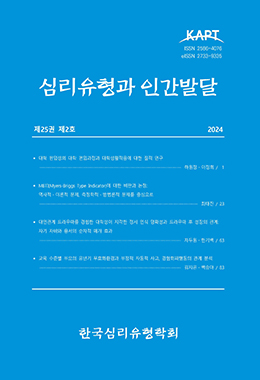본 연구는 대인관계 트라우마 경험이 있는 대학생들을 대상으로 자신의 정서를 명확히 인식하는 정도와 트라우마 경험 후 심리적 성장의 관계에서 자기 자비와 용서의 매개 역할을 검증하였다. 총 317명의 남녀 대학생이 응답한 설문지를 분석한 주요 결과를 요약하면 다음과 같다. 첫째, 정서 인식 명확성은 자기 자비를 통해 트라우마 후 성장을 정적으로 유의하게 예측하였다. 둘째, 정서 인식 명확성은 용서를 통해 트라우마후 성장을 정적으로 유의하게 예측하였다. 셋째, 정서 인식 명확성은 자기 자비와 용서의 순차적 매개를 통해 트라우마 후 성장을 유의하게 예측하였다. 이러한 결과는 성장 과정에서 다양한 대인관계 상처를 경험한 대학생들의 경우, 일상에서 자신의 정서를 명확하게 잘 알아차릴수록 자신의 정서를 있는 그대로 수용하고 친절히 돌보는 자기 자비 경향과 상처를 준 대상을 관대하게 대하며 용서하는 경향이 증가하며, 이렇게 자기 자비와 용서의 경향이 증가할수록 대인관계 상처를 딛고 심리 사회적으로 더욱 성장할 가능성이 증가함을 나타낸다. 특히, 자신의 정서를 수용하고 친절히 보살피는 자기 자비 경향이 높을수록 상처를 준 대상을 용서하는 행동 경향의 증가를 통해 트라우마 후 성장의 가능성이 증가하는 것으로 드러났다. 본 연구 결과의 임상적 함의와 연구의 제한점과 추후 연구 방향이 구체적으로 논의된다.
This study investigated the mediating roles of self-compassion and forgiveness in the relationship between emotional clarity and post-traumatic growth (PTG) among college students who reportedly have experienced interpersonal trauma. The major findings from the analysis of survey responses from 317 male and female college students are summarized as follows. First, emotional clarity significantly predicted post-traumatic growth through self-compassion. Second, emotional clarity significantly predicted post-traumatic growth through forgiveness. Third, emotional clarity significantly predicted post-traumatic growth through the sequential mediation of self-compassion and forgiveness. These results suggest that for college students who have experienced various interpersonal traumas, the more clearly they recognize their own emotions in daily life, the more likely they are to develop self-compassion of a tendency to accept and kindly care for their emotions and a tendency to forgive those who have hurt them. As the tendencies toward self-compassion and forgiveness increase, so does the possibility of psychosocial growth beyond interpersonal wounds. In particular, the higher the tendency to accept and kindly care for one’s own emotions through self-compassion, the greater the increase in the tendency to forgive those who caused harm, which, in turn, enhances the likelihood of post-traumatic growth. The clinical implications of these findings, as well as the limitations of the study and directions for future research, are discussed in detail.


